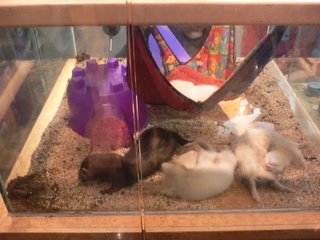The phrase "Chinese fire drill" usually describes a state of confusion. It is also the name of a game, which you may have seen in the opening sequence of the TV series "Happy Days," in which a car stops at a red light, everyone gets out of the car, runs around the car, and then gets back in the car before the light turns green. I recently took part in a fire drill in Taiwan, which is normally a totally unremarkable event, but it turned out to be different from the average fire drill—it was a fire drill with Chinese characteristics. Although the drill was not chaotic, it was the most uncomfortable drill I have participated in.
Fire regulations vary from country to country. In some countries, elevators are actually used as part of the fire escape plan. That is not true of Taiwan, but there are some unique fire escape items here. The first is the "slow descent machine," or "escape sling," which is a device used to rappel down the side of a building. This device is often placed next to a removable window. The second device is the "thick smoke escape bag," or, more literally, "plastic bag." Contrary to what you were taught as a child, this clear plastic bag is used by sticking your head inside the bag and cutting off your air supply, in the hope of providing a small but smoke-free air supply as you flee a building.
In the recent fire drill, I finally had a chance to test out the plastic bag. First, one opens the bag and waves it through the air, filling it with air. Then, one puts his head inside and holds the opening of the bag closed around the neck. In this way, I began the fire drill, which included unscented smoke of some sort (not dry ice), so the drill was actually fun as it started. Everybody has a plastic bag on his head! We're going through the smoke! After descending two or three floors down the staircase, the fire drill started being less fun. The bag became stuffy, and going down floor after floor, the oxygen content in the bag decreased. After going down about seven floors, it became very uncomfortable. I let a little bit of outside air come in the bag through the neck, but in the interest of Science, I sacrificed a few brain cells and tried to see how well I could breathe in the oxygen-deprived bag. After completing the fire drill, I came to the surprising conclusion that it is difficult to breathe in an oxygen-deprived plastic bag. If these findings are not accepted for publication in a scientific journal, then I will be requesting that Science return my expired brain cells.
For the origin of the phrase "Chinese fire drill," see this portion of the entry from the Random House
dictionary:
The first sense [a state of utter confusion] was first used in the military in World War II. Chinese here is not necessarily a racial sentiment. Several expressions in common use in aviation since World War I, such as Chinese landing 'a clumsy landing' and Chinese ace 'an inept pilot', derive from the English phrase one wing low, thought to resemble the Chinese language or a Chinese name. The use of Chinese to mean 'clumsy; inferior' may stem from these phrases, although there were earlier isolated examples which were based on ideas of the inferiority of the Chinese.
The car-prank sense is first attested in print in the early 1970s, but a number of people have reported its use in the 1940s, '50s, and '60s, so it is likely that the phrase was current at the time, but simply was not written down that early.
Whatever the origin of the phrase, and whichever meaning is intended, it is now regarded as offensive to Chinese people, and should be avoided.
For a look at one of these amazing plastic bags, see here.
For a cartoon of some creatures wearing these plastic bags (to avoid SARS), see here.
For a picture of someone rappelling a tall building using a fire escape device, see here.


